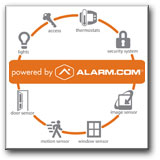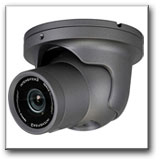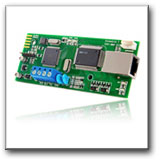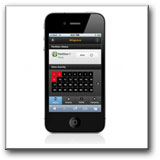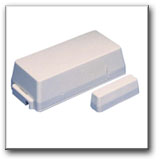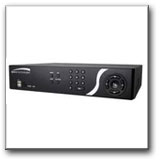Home & Commercial Security, 24 Hr Monitoring, Home Theater Systems and More
Security Statistics
Click on the headings below to learn more about security and what you can do to help avoid being a victim:
Click on the headings below to learn more about security and what you can do to help avoid being a victim:
- 2,000,000 home burglaries are reported each year in the United States.
- About 30 percent of all burglaries are through an open or unlocked window or door.
- Nearly 66 percent of all burglaries are residential (home) break-ins.
- Renters are just as likely to be the victims of property crime as homeowners.
- The highest percentage of burglaries occur during the summer months.
- Homes without security systems are up to 300% more likely to be broken into.
- According to the FBI, Home Break-In (Burglary) is the most common threat to our home.
- In the U.S. a home burglary occurs every 13 seconds.
- Every 13 seconds a home intrusion is committed.
- 2.5 million+ home intrusions are committed each year.
- Only 17% of the homes in U.S. have a security system.
- 2,500+ cars stolen per day… almost 2 cars a minute.
- Identity theft is the fastest growing crime in the U.S.
- 1 out of 3 residential assaults are a result of a burglary.
- 85% of break-ins are from non-professionals that are usually more desperate and dangerous.
- People want security and need peace of mind.
- Insurance agencies can offer discounts up to 20% for auto insurance when a home security system is installed.
- Home security statistics tell us that 95% of break-ins needed some amount of force to break-in.
- Thieves prefer easy access, through an unlocked doors or windows.
- Home security statistics tell us that the type of tools used to break in are usually simple; a screwdriver, pliers, pries bars, and small hammers are most common.
- Police usually only clear 13% of all reported burglaries due to lack of witnesses or physical evidence.
- Perpetrators are usually male, under 25 years of age.
- They are looking for items that are small and expensive and easily converted to cash.
- Favorite items include: cash, jewelry, laptops, guns, digital cameras, small electronics (iPods, GPS, PDA’s MP-3’s and CD’s)
- Money is usually used to support a drug habit.
- Usually occur in the daytime when occupants are at school or work.
- July and August most the frequent months for break-ins.
- February is the least frequent for home breaks.
- Simple selection process
- Choose an unoccupied home with easy access, the greatest amount of cover and the best escape routes.
- Homeowners often make this selection process easy for thieves by failing to take simple precautions.
- Harden the Target.
- Home security statistics tell us that burglars will usually bypass a house if it requires too much effort or more skills or tools than they possess.
- Most breaks are through front or back doors.
- Unlocked outer doors to common hallways give thieves a chance to break in through inner doors while remaining out of sight of neighbors and police. Keep outside doors locked
- Use a solid core or metal door at entrance points.
- Use a heavy-duty deadbolt with a one inch throw bolt.
- Use a quality knob-in-lock set with dead latch mechanism.
- Use a heavy duty strike plate with 3 inch screws into the frame.
- Use a wide angle peephole.
- When you move into a new house or apartment, change the door locks.
- Most common method of forced entry is simply to kick in the door.
- The weakest point is usually the lock strike plate.
- You should upgrade to a heavy-duty strike plate.
- This type of door is usually secured by latches only.
- They are vulnerable to attack.
- Security can be increased by inserting a wooden dowel or stick into the door track to prevent movement.
- There are also metal track blockers / locks available.
- Windows are left unlocked at a much higher rate than doors.
- An open window that is visible from the street may be the sole reason that a house is targeted. An open window with only a locked window screen is particularly inviting to thieves. Access is quick, easy and silent.
- Windows have latches, not locks; they should have secondary locking devices.
- Wooden sticks/dowels work well with horizontal sliding windows.
- For vertical windows, through the frame pins work well.
- For ventilation, leave no more than a 4 – 6 inch window opening.
- Make sure that opening is not large enough to allow someone to reach through to unlock the door or remove window lock.
- Get to know your neighbors.
- Agree to watch each other’s home.
- While on vacation, pick up mail, newspapers, packages and flyers; put out their trash on trash day (and return empty barrels).
- Offer to park your car in their driveway and listen for a siren from their home security system.
- Water flowers, grass and plants.
- Communicate with each other.
- Interior lighting is necessary to show signs of activity inside.
- Use timers (lights, radios and televisions). Make the home appears occupied.
- Exterior lighting is very important.
- Lights in front of the home should be on a timer.
- If you are not an owner of one of Safeguard Security's Reactor home security systems, use timers or motion sensors for other exterior lighting, especially at the rear of the house.
- Increase the potential of burglar being caught.
- Burglars will usually bypass a home that they believe has a sophisticated burglar alarm.
- Home security statistics tell us that an audible horn or siren must be part of the system.
- Alarm systems should reset within three minutes so as not to disturb the neighborhood.
- Leave a key to your house and alarm system with a trusted neighbor who is usually there when you are not home.
- Alarm systems can also monitor fire sensors and panic buttons.
- Engrave your driver’s license number (and state) on televisions, stereos, computers and small electronic appliances.
- Photograph your valuables, especially jewelry and electronics.
- Make a list of make, model, serial numbers and value of important items.
- Give a copy of this list to a relative or close friend.
- If you see anyone acting suspicious around your house or a neighbor’s house, call 911 immediately.
- If your house is broken into, call police immediately. Don’t touch anything that the criminal may have touched.
- Wait outside for police to arrive.
- Write down plate numbers of suspicious vehicles.
- Not all break-ins will be stopped, regardless of the precautions that you take. Talk to your insurance agent to make sure that your valuables will be covered in the event of a theft.
For sales, repair or any other questions about these products feel free to contact us!
Call Today!
817-447-6310
